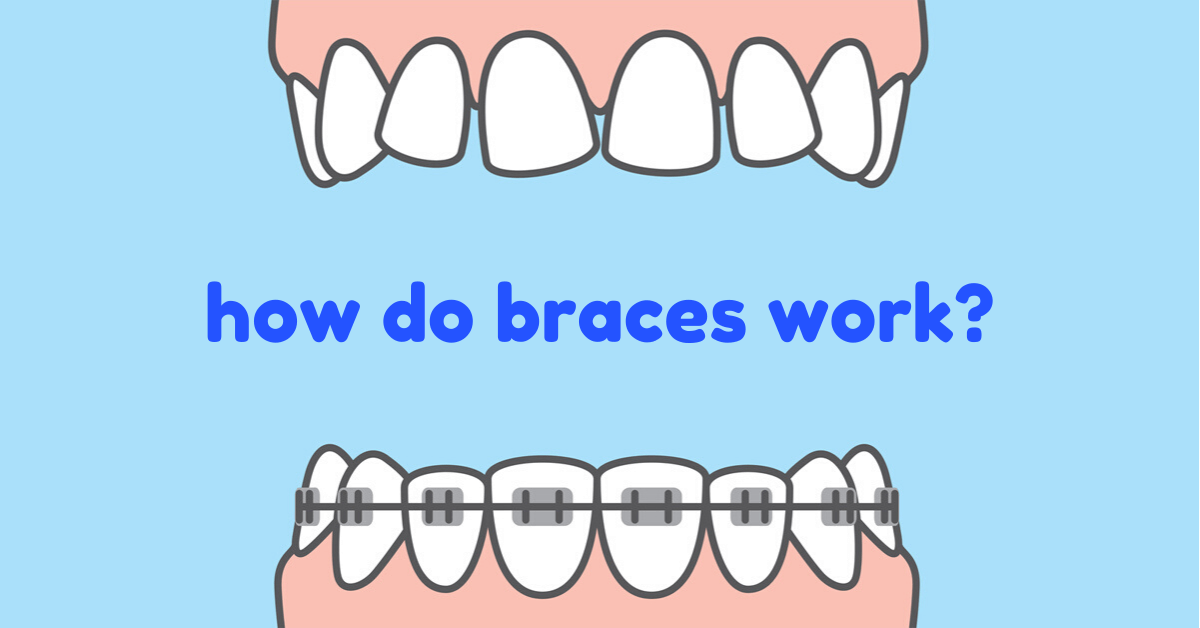
There’s no denying that braces are a bit complicated. With all the brackets, wires, and other moving parts, how can you be expected to understand exactly what’s going on in your mouth?
The clearer you are on the mechanisms of treatment, the better a participant you’ll be. Your orthodontic treatment depends on your (or our child’s) cooperation. When you act in ways that aid braces’ ultimate goal, you help to speed up treatment (which, as we all know, is what every orthodontic patient really wants).
Ready for the braces basics? Read on to learn about how Dr. Thomas manages to use small pieces of metal to reshape your entire smile.
How Do Metal Braces Move My Teeth?
Once you understand how braces work, you’ll see why every last little rubber band is completely necessary. Your teeth aren’t easily moved. They’re connected to your jaw bones, and they will resist pressure. It takes concentrated, ongoing force in order to create a shift.
- The foundations of braces are metal brackets. Your orthodontist bonds these to your teeth at the outset of treatment. These rectangular pieces of stainless steel have slots through which the archwires will pass.
The slots play a key role in determining tooth movement. While we often think of teeth as needing to move to one side or the other (to fill in a space and straighten a smile), they more often need to be tilted or turned. The slots determine tip and torque, establishing how a tooth will be rotated around a central axis. Each tooth’s bracket is unique, and prescribes a certain tip and torque. - A bracket can’t accomplish this movement on its own; it must be attached to a wire to accomplish tooth shifting. Arch wires are made of materials that want to maintain their original shapes. So, when an orthodontist bends a wire, it works to return to its former state. This attempt creates consistent force that shifts your teeth.
The arch wires used in braces become thicker and stronger as treatment progresses. When your braces are first put on, your brackets are attached to a light wire that is easily bent. Gentle force is the best way to shift teeth (for reasons we’ll mention in a moment). These early wires rotate the teeth to align each tooth within the occlusal surface (overall bite). As treatment progresses, Dr. Thomas will switch to heavier, rectangular wires. By placing bends in these wires, he will be able to tweak the occlusion. - Last part of the braces equation: o-rings. The wires are held in place with these elastic ties. Depending on your preference, these can be colorful or of a subtler shade of white.
Why Do Braces Take So Long?
We’ve covered the mechanisms behind tooth movement – now it’s time to talk about how your body responds.
Teeth become set in new positions through bone remodeling. This is a process of bone resorption (dissolving bone) and bone formation (creation of new bone tissue).
The right amount of constant pressure needs to be applied to teeth in order for bone remodeling to take place at the best possible rate. As the arch wires work to return to their former shapes, they apply pressure to each tooth’s root. Within the periodontal ligament (gum tissue around the root), cells called osteoblasts and osteoclasts react. These create new bone and remove old bone, respectively.
It takes time for this process to take place safely and effectively. More importantly, it takes up to 10 months for the new bone growth to solidify. This is why moving teeth takes time, and why you need to wear retainers after treatment to maintain your straighter teeth.
Orthodontic Treatment in Naperville and Hinsdale
Braces are our language. If you have any questions, just get in touch!





